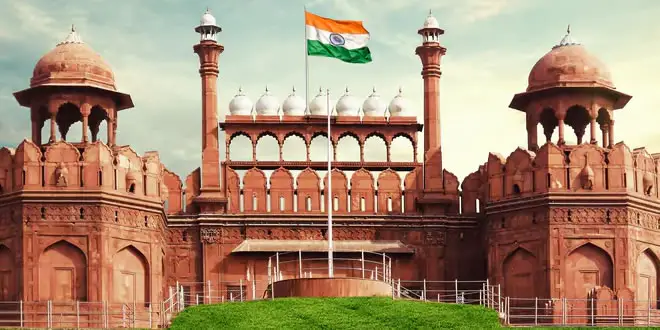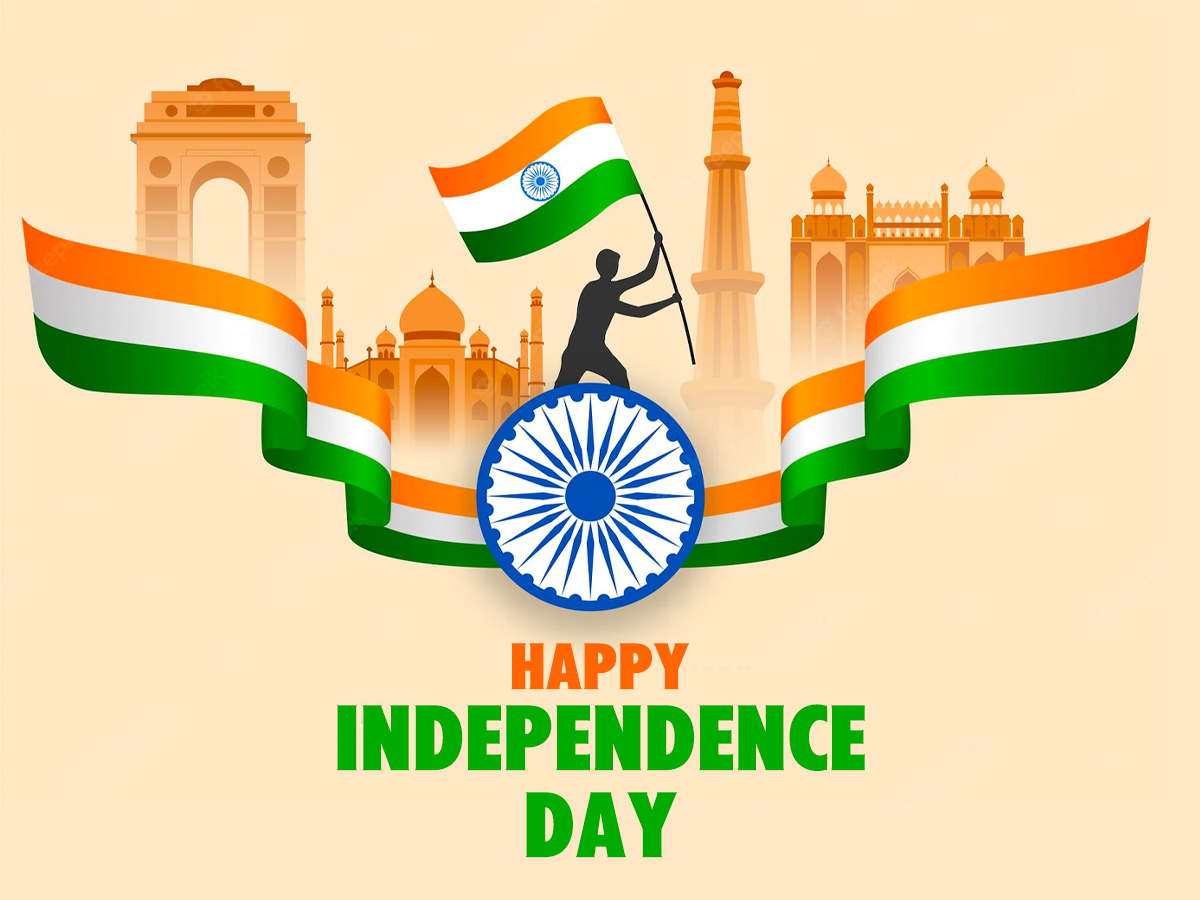Why Is National Flag Hoisted On Independence And Unfurled On Republic Day.

Why Is National Flag Hoisted On Independence And Unfurled On Republic Day.
Every year on August 15th, India celebrates Independence Day, a national holiday that commemorates the country’s liberation from British colonial rule. This day marks a significant milestone in India’s history, symbolizing the end of nearly two centuries of British dominance and the beginning of a new era of freedom and self-governance.
This year, India is celebrating its 78th Independence Day on August 15, a day marked by immense pride, vigor, and zeal across the country. On this significant occasion, we honor the memory of the freedom fighters who valiantly struggled for our nation’s independence. People all over India organize cultural programs, seminars, and events to pay tribute to these brave souls who sacrificed their lives for the freedom we cherish today.
An interesting aspect of the Independence Day celebrations is the “flag hoisting” ceremony, a term often confused with “flag unfurling.” Although these terms are commonly interchanged, they represent distinct practices in presenting the national flag. On Independence Day, the flag is hoisted from a lower position to the top of the flagpole, symbolizing the country’s rise to freedom. In contrast, on Republic Day, the flag is unfurled as it is already positioned at the top of the flagpole, signifying the nation’s established sovereignty under the Constitution.
Understanding this subtle yet significant difference enhances our appreciation of how India’s national identity is celebrated through these two pivotal national holidays.
Difference between unfurling and hoisting the flag
The crucial difference lies in how the tricolour is positioned during the two ceremonies. On Independence Day, the flag is positioned at the bottom of the pole and is raised (hoisted) by the Prime Minister, from the bottom to the top.
On Republic Day, the flag is folded or rolled up and attached to the top of the pole. It is then unveiled (unfurled) by the President, who does so without pulling it up.
Why Is National Flag Hoisted On Independence And Unfurled On Republic Day.
Why the flag is hoisted and not unfurled on Independence Day?
OnIndependence Day, the Prime Minister hoists the flag from the bottom of the pole. Flag hoisting on this day often includes a ceremonial event with a military or civilian honour guard raising the flag while the national anthem is played. The hoisting on Independence Day symbolises the rise of a new nation, patriotism, and freedom from colonial rule.
Post a commentOn Republic Day, the flag is unfurled by the President and it remains closed and tied at the top of the flagpole. The flag is unfolded by the President without pulling it up. Republic Day marks the adoption of the Indian Constitution in 1950
The difference between the hoisting of the national flag on Independence Day and its unfurling on Republic Day in India is symbolic and reflects the distinct significance of these two national holidays.
Independence Day (August 15) – Hoisting the Flag:
- Historical Context: On August 15, 1947, India gained independence from British rule. The first Prime Minister of India, Jawaharlal Nehru, hoisted the national flag at the Red Fort in Delhi to mark the country’s freedom.
- Symbolism: The act of hoisting the flag on Independence Day signifies the country’s rise as a newly independent nation. The flag is typically raised from a lower position to the top of the flagpole, symbolizing the nation’s victory and the end of colonial rule.
Republic Day (January 26) – Unfurling the Flag:
- Historical Context: Republic Day celebrates the day when the Constitution of India came into effect on January 26, 1950, making India a sovereign republic. Unlike Independence Day, Republic Day marks the adoption of the Constitution and the transition to a republic.
- Symbolism: On Republic Day, the national flag is unfurled rather than hoisted. The flag is already at the top of the flagpole and is simply unfurled. This reflects that the nation is now independent, sovereign, and established with its own Constitution.
ALSO READ- Republic Day 2025: Why does the president unfurl the flag on January 26, not the prime minister?
Key Differences:
- Independence Day: The flag is hoisted, symbolizing the nation taking control of its destiny.
- Republic Day: The flag is unfurled, symbolizing the nation already being in a position of power and celebrating its constitutional values.

Why Is National Flag Hoisted On Independence And Unfurled On Republic Day.

выводу из запоя в стационаре [url=http://guryevsk.forum24.ru/?1-2-0-00000037-000-0-0-1730817804]выводу из запоя в стационаре[/url] .
вывод из запоя стационар [url=https://www.superjackson.ukrbb.net/viewtopic.php?f=28&t=9748]вывод из запоя стационар[/url] .
лечению наркозависимости в стационаре [url=helene.borda.ru/?1-13-0-00000116-000-0-0-1730817990]лечению наркозависимости в стационаре[/url] .
Как получить диплом о среднем образовании в Москве и других городах
Пошаговая инструкция по официальной покупке диплома о высшем образовании
Купить диплом Барнаул
Как безопасно купить диплом колледжа или ПТУ в России, что важно знать
Официальное получение диплома техникума с упрощенным обучением в Москве
вывод из запоя в наркологическом стационаре [url=angelladydety.getbb.ru/viewtopic.php?f=44&t=42991]вывод из запоя в наркологическом стационаре[/url] .
выводу из запоя в стационаре [url=https://www.dimitrov.forum24.ru/?1-3-0-00000181-000-0-0-1730818543]выводу из запоя в стационаре[/url] .
вывод из запоя в наркологическом стационаре [url=https://www.dubna.myqip.ru/?1-5-0-00000289-000-0-0-1730818789]вывод из запоя в наркологическом стационаре[/url] .
вывод из запоя в наркологическом стационаре Самары [url=https://sergiev.0pk.me/viewtopic.php?id=3468/]вывод из запоя в наркологическом стационаре Самары[/url] .
Как приобрести аттестат о среднем образовании в Москве и других городах
капельница от запоя [url=www.pandora.ukrbb.net/viewtopic.php?f=2&t=12325]капельница от запоя[/url] .
вывод из запоя в стационаре анонимно [url=http://www.masa.forum24.ru/?1-16-0-00002638-000-0-0-1730819425]вывод из запоя в стационаре анонимно[/url] .
лечения наркозависимости в стационаре [url=https://vip.rolevaya.info/viewtopic.php?id=6934]лечения наркозависимости в стационаре[/url] .
капельница от запоя на дому в Коломне [url=https://ideya.forums.party/viewtopic.php?id=674]капельница от запоя на дому в Коломне[/url] .
Узнайте, как безопасно купить диплом о высшем образовании
Как официально купить аттестат 11 класса с упрощенным обучением в Москве
Реально ли приобрести диплом стоматолога? Основные этапы
Легальная покупка школьного аттестата с упрощенной программой обучения
Приобретение диплома ПТУ с сокращенной программой обучения в Москве
Betflare ???????? [url=http://betflare8.com/]Betflare ????????[/url] .
стоимость капельницы от запоя [url=https://family2.quadrobb.me/viewtopic.php?id=1852/]стоимость капельницы от запоя[/url] .
после капельницы от запоя [url=http://www.kryto.ukrbb.net/viewtopic.php?f=3&t=1178&p=2319]после капельницы от запоя[/url] .
Покупка школьного аттестата с упрощенной программой: что важно знать
Купить диплом экономиста – оптимальное решение
Как получить диплом техникума с упрощенным обучением в Москве официально
Как безопасно купить диплом колледжа или ПТУ в России, что важно знать
Официальная покупка диплома вуза с сокращенной программой в Москве
Приобретение диплома ПТУ с сокращенной программой обучения в Москве
Купить диплом экономиста – оптимальное решение
Диплом пту купить официально с упрощенным обучением в Москве
Процесс получения диплома стоматолога: реально ли это сделать быстро?
prodamus промокод [url=https://promokod-prod.ru]prodamus промокод[/url] .
Как официально купить аттестат 11 класса с упрощенным обучением в Москве
Полезные советы по безопасной покупке диплома о высшем образовании
Сколько стоит диплом высшего и среднего образования и как его получить?
Купить диплом ВУЗа России
Вопросы и ответы: можно ли быстро купить диплом старого образца?
Как официально купить аттестат 11 класса с упрощенным обучением в Москве
Всё, что нужно знать о покупке аттестата о среднем образовании без рисков
как человека найти по номеру телефона [url=www.r3s.su]www.r3s.su[/url] .
Купить диплом Барнаул
рулонные шторы с автоматическим управлением [url=www.rulonnye-shtory-s-elektroprivodom499.ru]рулонные шторы с автоматическим управлением[/url] .
nakrutkamedia [url=https://www.nakrutkamedia14.com]nakrutkamedia[/url] .
гибкий электрокарниз привод [url=http://elektrokarniz98.ru/]гибкий электрокарниз привод[/url] .
langfristprognose [url=wettervorhersage-deutschland.com]langfristprognose[/url] .
Официальная покупка школьного аттестата с упрощенным обучением в Москве
Официальная покупка диплома вуза с сокращенной программой обучения в Москве
Можно ли купить аттестат о среднем образовании? Основные рекомендации
Как быстро и легально купить аттестат 11 класса в Москве
Возможно ли купить диплом стоматолога, и как это происходит
Рекомендации по безопасной покупке диплома о высшем образовании
Всё, что нужно знать о покупке аттестата о среднем образовании
франшиза купить готовый бизнес недорого [url=http://www.franshizy36.ru]франшиза купить готовый бизнес недорого[/url] .
каталог франшиз [url=http://www.franshizy37.ru]каталог франшиз[/url] .
Betovo Italia slot machine [url=http://betovo-betting.com]Betovo Italia slot machine[/url] .
открыть бизнес по франшизе [url=www.franshizy34.ru]открыть бизнес по франшизе[/url] .
Betovo live betting [url=betovo-it.com]Betovo live betting[/url] .
Как избежать рисков при покупке диплома колледжа или ПТУ в России
Быстрое обучение и получение диплома магистра – возможно ли это?
Диплом вуза купить официально с упрощенным обучением в Москве
Полезные советы по безопасной покупке диплома о высшем образовании
Узнайте, как безопасно купить диплом о высшем образовании
Купить диплом старого образца, можно ли это сделать по быстрой схеме?
Приобретение диплома ПТУ с сокращенной программой обучения в Москве
таможенное оформление брокер [url=https://tamozhennyj-broker-moskva.ru/]таможенное оформление брокер[/url] .
Как приобрести диплом о среднем образовании в Москве и других городах
вывод из запоя [url=http://vip.rolevaya.info/viewtopic.php?id=6939/]вывод из запоя[/url] .
Как оказалось, купить диплом кандидата наук не так уж и сложно
sb это [url=https://www.tamozhennyj-predstavitel-moskva11.ru]sb это[/url] .
бизнес по франшизе [url=http://www.franshizy38.ru]бизнес по франшизе[/url] .
продамус промокод скидка [url=https://planeta.mybb.social/viewtopic.php?id=2388#p7838/]продамус промокод скидка[/url] .
Возможно ли купить диплом стоматолога, и как это происходит
франшиза купить готовый бизнес недорого [url=https://franshizy32.ru/]франшиза купить готовый бизнес недорого[/url] .
Процесс получения диплома стоматолога: реально ли это сделать быстро?
на заказ кухни [url=mirmebeli777.ru]на заказ кухни[/url] .
Как получить диплом стоматолога быстро и официально
светлое вино [url=www.vin-tage.ru]светлое вино[/url] .
Реально ли приобрести диплом стоматолога? Основные этапы
купить уличные светодиодные светильники в москве [url=http://svetilnik-svetodiodnyj-ulichnyj.ru]купить уличные светодиодные светильники в москве[/url] .
вино белое недорогое [url=http://www.pekin-vl.ru]вино белое недорогое[/url] .
вино белое недорогое [url=warm-cats.ru]вино белое недорогое[/url] .
Официальная покупка диплома ПТУ с упрощенной программой обучения
нарколог на дом анонимно [url=www.dolgoprudni.rusff.me/viewtopic.php?id=3062]нарколог на дом анонимно[/url] .
Приобретение школьного аттестата с официальным упрощенным обучением в Москве
нарколог на дом краснодар [url=dolgoprudni.rusff.me/viewtopic.php?id=3063]нарколог на дом краснодар[/url] .
Сколько стоит диплом высшего и среднего образования и как это происходит?
Сколько стоит диплом высшего и среднего образования и как его получить?
продамус промокод скидка [url=kryto.ukrbb.net/viewtopic.php?f=2&t=1431]kryto.ukrbb.net/viewtopic.php?f=2&t=1431[/url] .
вызов нарколога на дом краснодар [url=https://snatkina.borda.ru/?1-11-0-00000200-000-0-0-1730730452/]вызов нарколога на дом краснодар[/url] .
нарколог на дом [url=http://zelenograd.rusff.me/viewtopic.php?id=1230/]нарколог на дом[/url] .
платный нарколог на дом [url=http://vip.mybb.rocks/viewtopic.php?id=7672/]платный нарколог на дом[/url] .
Как официально купить аттестат 11 класса с упрощенным обучением в Москве
Jugabet registro [url=https://www.jugabet9.com]Jugabet registro[/url] .
Приобретение школьного аттестата с официальным упрощенным обучением в Москве
Официальная покупка диплома вуза с сокращенной программой в Москве
электрокарниз купить [url=https://elektrokarniz-dlya-shtor499.ru/]электрокарниз купить[/url] .
проект перепланировки квартиры [url=https://www.zakazat-proekt-pereplanirovki-kvartiry11.ru]проект перепланировки квартиры[/url] .
поролон купить москва [url=http://porolon-dlya-divana.ru/]поролон купить москва[/url] .
Приобретение диплома ПТУ с сокращенной программой обучения в Москве
Как официально купить диплом вуза с упрощенным обучением в Москве
Приобретение диплома ПТУ с сокращенной программой обучения в Москве
Jugabet promociones [url=http://severussnape.borda.ru/?1-4-0-00000386-000-0-0-1734608770/]Jugabet promociones[/url] .
Как получить диплом стоматолога быстро и официально
Купить диплом о среднем образовании в Москве и любом другом городе
текстовый вирт чат [url=http://anonimnyj-chat11.ru]текстовый вирт чат[/url] .
Сколько стоит диплом высшего и среднего образования и как его получить?